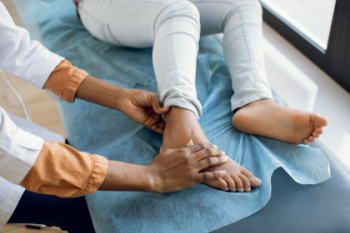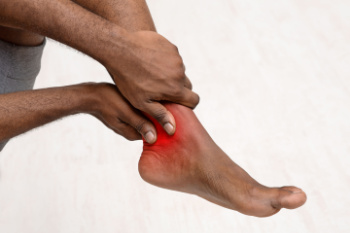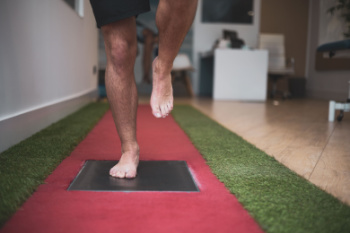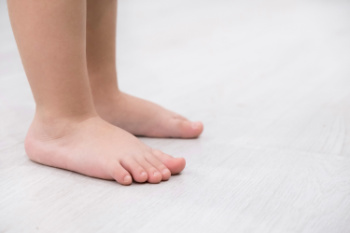Conéctate con nosotros
Blog
Items filtered by date: Marzo 2024
Common Diagnostic Tests for Foot and Ankle Pain

Common diagnostic tests for foot and ankle pain encompass a variety of methods aimed at identifying the underlying cause of discomfort and informing appropriate treatment strategies. X-rays are often the initial imaging choice, providing detailed views of bones to detect fractures, arthritis, or bone abnormalities. Magnetic Resonance Imaging, or MRI, offers more comprehensive images, particularly useful for soft tissue injuries, such as ligament tears or tendon damage. Ultrasound scans provide real-time imaging and are effective for assessing soft tissue structures like tendons and ligaments. CT scans may be used to visualize complex fractures or detailed bone structures. Additionally, diagnostic procedures like electromyography, EMG, and nerve conduction studies, NCS, help assess nerve function, aiding in the diagnosis of conditions like peripheral neuropathy or nerve compression syndromes. Physical examination techniques, including range of motion tests and palpation, complement these diagnostic tests, providing valuable insights into the source of foot and ankle pain. If you have foot or ankle pain, it is suggested that you make an appointment with a podiatrist who can examine you and conduct tests necessary to properly diagnose and treat you.
Foot Pain
Foot pain can be extremely painful and debilitating. If you have a foot pain, consult with Arthur Segall, Jr., DPM from Segall Foot and Ankle. Our doctor will assess your condition and provide you with quality foot and ankle treatment.
Causes
Foot pain is a very broad condition that could be caused by one or more ailments. The most common include:
- Bunions
- Hammertoes
- Plantar Fasciitis
- Bone Spurs
- Corns
- Tarsal Tunnel Syndrome
- Ingrown Toenails
- Arthritis (such as Gout, Rheumatoid, and Osteoarthritis)
- Flat Feet
- Injury (from stress fractures, broken toe, foot, ankle, Achilles tendon ruptures, and sprains)
- And more
Diagnosis
To figure out the cause of foot pain, podiatrists utilize several different methods. This can range from simple visual inspections and sensation tests to X-rays and MRI scans. Prior medical history, family medical history, and any recent physical traumatic events will all be taken into consideration for a proper diagnosis.
Treatment
Treatment depends upon the cause of the foot pain. Whether it is resting, staying off the foot, or having surgery; podiatrists have a number of treatment options available for foot pain.
If you have any questions, please feel free to contact our offices located in Plantation, and Ft. Lauderdale, FL . We offer the newest diagnostic and treatment technologies for all your foot care needs.
How Psoriatic Arthritis Affects the Feet

Psoriatic arthritis, or PsA, is a condition intricately linked with psoriasis, affecting up to 50 percent of those individuals with PsA. Psoriatic arthritis targets the joints, tendons, and ligaments of the feet, leading to inflammation and discomfort. Symptoms can include swelling, pain, stiffness, and changes in appearance, such as nail pitting and skin lesions. Foot involvement in PsA can make walking and daily activities challenging, with conditions like plantar fasciitis and Achilles tendonitis causing significant pain and limiting movement. Complications like dactylitis, which is a sausage-like swelling of the toes, and arthritis mutilans, or joint deformity, can occur if left untreated. Podiatrists can offer tailored treatment plans, including medication and specific orthotics to alleviate symptoms and enhance mobility. If you believe you have psoriatic arthritis that is affecting your feet, it is suggested that you schedule an appointment with a podiatrist.
Arthritis can be a difficult condition to live with. If you are seeking treatment, contact Arthur Segall, Jr., DPM from Segall Foot and Ankle. Our doctor can provide the care you need to keep you pain-free and on your feet.
Arthritic Foot Care
Arthritis is a joint disorder that involves the inflammation of different joints in your body, such as those in your feet. Arthritis is often caused by a degenerative joint disease and causes mild to severe pain in all affected areas. In addition to this, swelling and stiffness in the affected joints can also be a common symptom of arthritis.
In many cases, wearing ill-fitting shoes can worsen the effects and pain of arthritis. Wearing shoes that have a lower heel and extra room can help your feet feel more comfortable. In cases of rheumatoid arthritis, the arch in your foot may become problematic. Buying shoes with proper arch support that contour to your feet can help immensely.
Alleviating Arthritic Pain
- Exercises that stretch the foot can prevent further pain and injury and increase mobility
- Most of the pain can be alleviated with anti-inflammatory drugs, heat, and topical medications
- Massages can help temporarily alleviate pain.
It is best to see your doctor for the treatment that is right for your needs and symptoms. Conditions vary, and a podiatrist can help you determine the right method of care for your feet.
If you have any questions, please feel free to contact our offices located in Plantation, and Ft. Lauderdale, FL . We offer the newest diagnostic tools and technology to treat your foot and ankle needs.
Learning About Biomechanics of the Feet

Your feet and ankles are very important for how you move. Imagine them like the strong base of a building. They help you stand up straight and walk around without falling over. But did you know they do even more? They also help you push against things when you move. For instance, you push against the ground when you run or jump. But if your feet and ankles don't move the right way, it can cause problems. You might feel pain or get hurt. The muscles, bones, ligaments, and tendons in your feet and ankles all work together to keep you safe and moving. Learning about how your feet and ankles work helps you understand why they're so special and how we can take care of them. If you would like to learn more about how the feet and ankles work together to support your body or you have sustained an injury to these parts of your lower extremities, it is suggested that you make an appointment with a podiatrist for treatment.
If you have any concerns about your feet, contact Arthur Segall, Jr., DPM from Segall Foot and Ankle. Our doctor can provide the care you need to keep you pain-free and on your feet.
Biomechanics in Podiatry
Podiatric biomechanics is a particular sector of specialty podiatry with licensed practitioners who are trained to diagnose and treat conditions affecting the foot, ankle and lower leg. Biomechanics deals with the forces that act against the body, causing an interference with the biological structures. It focuses on the movement of the ankle, the foot and the forces that interact with them.
A History of Biomechanics
- Biomechanics dates back to the BC era in Egypt where evidence of professional foot care has been recorded.
- In 1974, biomechanics gained a higher profile from the studies of Merton Root, who claimed that by changing or controlling the forces between the ankle and the foot, corrections or conditions could be implemented to gain strength and coordination in the area.
Modern technological improvements are based on past theories and therapeutic processes that provide a better understanding of podiatric concepts for biomechanics. Computers can provide accurate information about the forces and patterns of the feet and lower legs.
Understanding biomechanics of the feet can help improve and eliminate pain, stopping further stress to the foot.
If you have any questions please feel free to contact our offices located in Plantation, and Ft. Lauderdale, FL . We offer the newest diagnostic and treatment technologies for all your foot and ankle needs.
Do Your Child's Feet Hurt?
How Obesity Affects Children’s Feet

Childhood obesity exerts a significant toll on foot health, with excess weight placing immense pressure on the feet, leading to structural changes like flat feet and pronation. This alters biomechanics and increases the risk of painful conditions such as plantar fasciitis and stress fractures. Childhood obesity can also delay skeletal development, causing abnormalities and leg length discrepancies. Foot pain and discomfort are common among overweight children, hindering physical activity and increasing the likelihood of further weight gain. Encouraging children to engage in low-impact exercises, like swimming or cycling, can alleviate pressure on the feet while promoting overall fitness. Custom-made orthotics can redistribute pressure, enhance shock absorption, and improve alignment, reducing the risk of injuries and alleviating discomfort. If your child is overweight and experiences foot or ankle pain, it is suggested that you schedule an appointment with a podiatrist for treatment options.
The more you weigh, the harder your feet must work to support your body. If you’re an obese individual and are concerned about your feet, contact Arthur Segall, Jr., DPM from Segall Foot and Ankle. Our doctor can provide the care you need to keep you pain-free and on your feet.
Obesity and Your Feet
People who are overweight are putting more pressure on their ankles, knees, and hips as well as their feet. This unfortunately can lead to variety of different issues.
Problems & Complications Stemming from Obesity
- When the body is overweight, it tries to compensate by changing the way that it moves. An obese person may lean forward and put extra weight on the wrong part of the foot. This puts unnecessary stress on the feet.
- Obese people are also more likely to develop type II diabetes which is a condition that causes a lot of foot problems. People with diabetes often don’t feel the cuts and sores that they may have on their feet, which can lead to more complicated and severe issues.
- Plantar fasciitis is another foot condition that can be caused by obesity. Plantar fasciitis is an inflammation of the tissue along the bottom of the foot, which causes pain and stiffness while walking and climbing stairs.
If you have any questions, please feel free to contact our offices located in Plantation, and Ft. Lauderdale, FL . We offer the newest diagnostic and treatment technologies for all your foot care needs.

